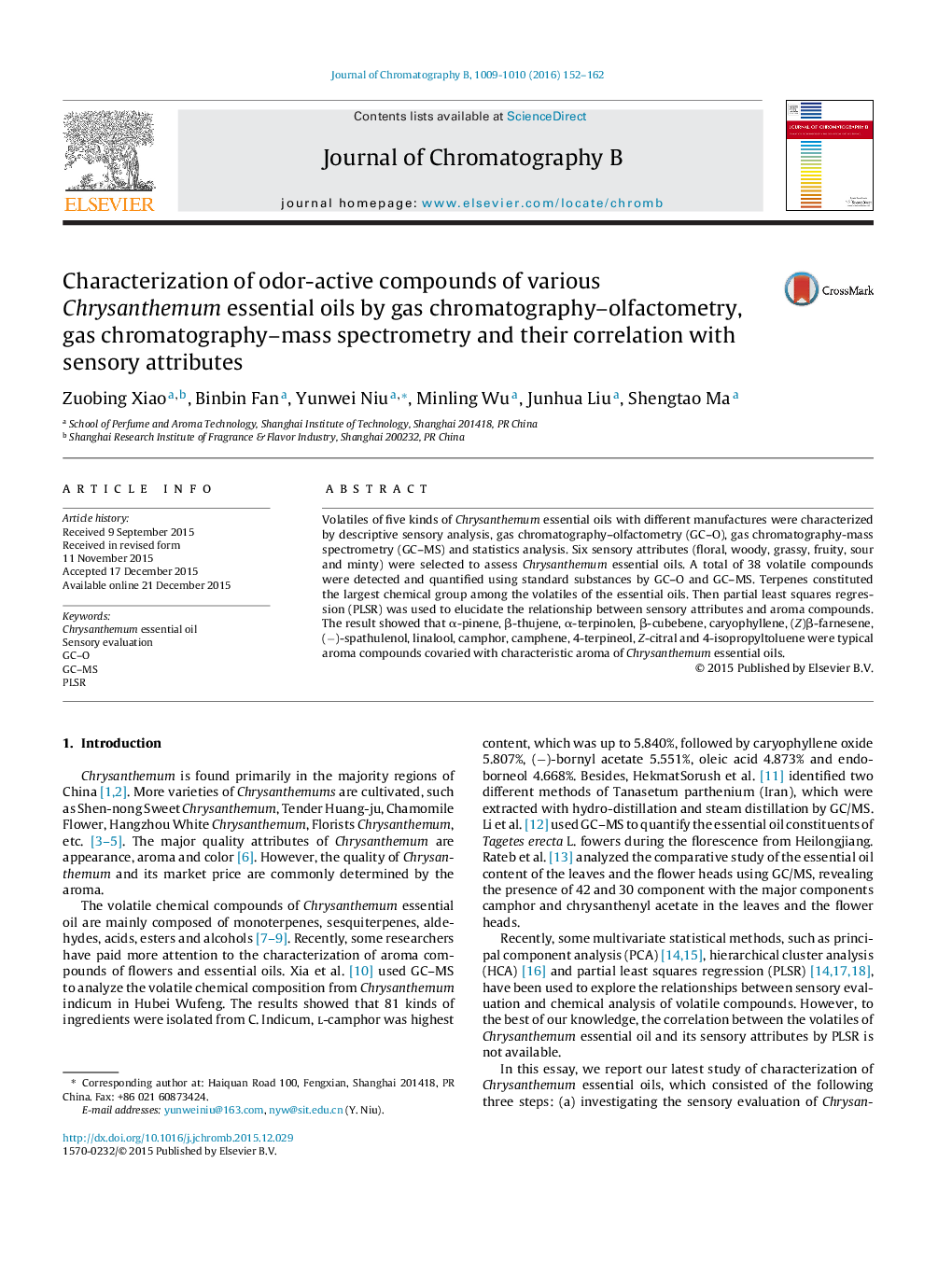| Article ID | Journal | Published Year | Pages | File Type |
|---|---|---|---|---|
| 1214747 | Journal of Chromatography B | 2016 | 11 Pages |
•GC–O and GC–MS were used to characterize the volatile compounds, including their aroma characteristics and contents.•The volatile compounds were quantified by external standard method.•PLS1 and PLS2 were used to elucidated the correlation between sensory attributes and the volatiles.
Volatiles of five kinds of Chrysanthemum essential oils with different manufactures were characterized by descriptive sensory analysis, gas chromatography–olfactometry (GC–O), gas chromatography-mass spectrometry (GC–MS) and statistics analysis. Six sensory attributes (floral, woody, grassy, fruity, sour and minty) were selected to assess Chrysanthemum essential oils. A total of 38 volatile compounds were detected and quantified using standard substances by GC–O and GC–MS. Terpenes constituted the largest chemical group among the volatiles of the essential oils. Then partial least squares regression (PLSR) was used to elucidate the relationship between sensory attributes and aroma compounds. The result showed that α-pinene, β-thujene, α-terpinolen, β-cubebene, caryophyllene, (Z)β-farnesene, (−)-spathulenol, linalool, camphor, camphene, 4-terpineol, Z-citral and 4-isopropyltoluene were typical aroma compounds covaried with characteristic aroma of Chrysanthemum essential oils.
